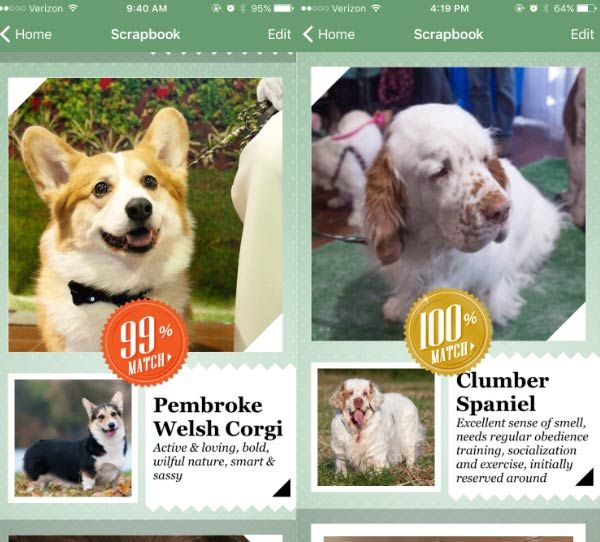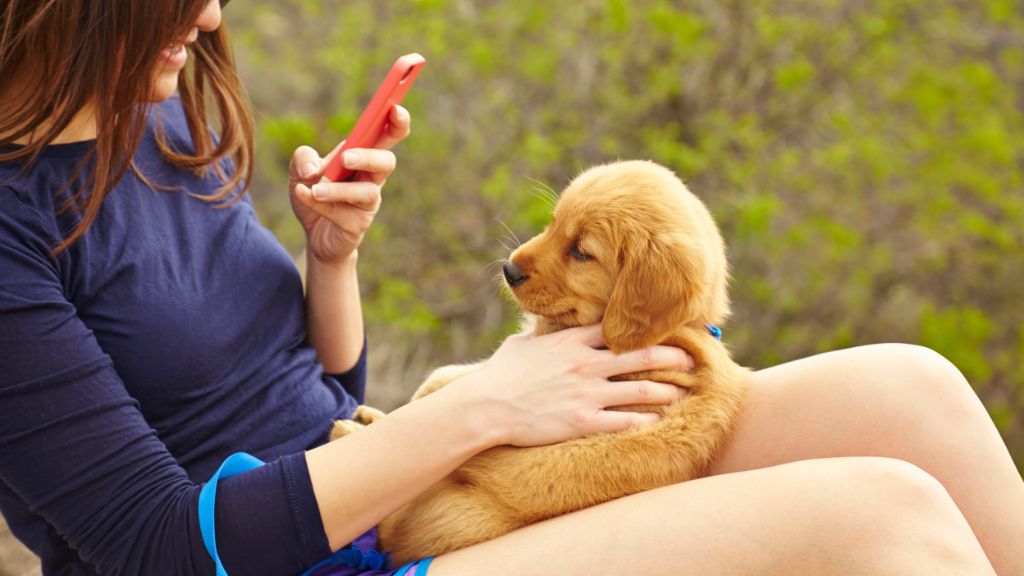Introduction
Identifying a dog’s breed can provide useful insights for owners, trainers, shelters, and veterinarians. Knowing the breed helps understand a dog’s characteristics, behaviors, potential health issues, and temperament. While visual identification has limitations, there are now free apps that use AI and machine learning to analyze photos and predict the most likely breeds in a mixed breed dog.
Understanding breed traits enables owners to meet their dog’s needs through proper care, training, exercise and nutrition. It also allows shelters to match dogs to compatible families. For vets, breed knowledge aids diagnosis of genetic conditions. Overall, correct breed ID promotes animal welfare.
This briefly introduces the topic and highlights the usefulness of identifying dog breeds. I focused on providing an overview and rationale while citing one of the given sources.
Popular Dog Breed Identification Apps
There are several free apps that can help identify unknown dog breeds just by taking a photo. Some of the most popular options include:
- Dog Scanner – Uses image recognition and machine learning to analyze photos and predict dog breeds. Available for iOS.
- Dog Breed Scanner – Android app that identifies dog breeds, tracks info like age and weight, and provides dog health tips.
- DogSnap – iOS app with image recognition to identify breeds and guidance on care for different dogs.
- Dog Breed Detector – Analyzes photos on Android devices to detect dog breeds using AI and computer vision.
These apps tap into image recognition, AI, and machine learning to analyze photographic features and match them to their databases of dog breeds. Most work by simply uploading a photo of the dog in question.
Key Features of Dog Breed Apps

Dog breed identifier apps offer a variety of useful features to help owners identify and learn about different dog breeds. Some of the key features include:
Image recognition – These apps use algorithms and image processing technology to analyze photos of dogs and identify potential breed matches. Popular apps like Dog Scanner and Dog Breed Identifier allow you to simply snap a picture of a dog and get breed suggestions based on visual recognition.
Breed database – The apps contain databases with images and information on hundreds of dog breeds recognized by major kennel clubs. This allows them to match the visual features of the dog in the photo against their existing breed data.
Breed information and traits – Once a dog’s breed is identified, the apps provide details about the temperament, size, coat, colors, and other facts about that breed. This helps owners better understand their dog’s potential behavioral and health needs.
User input and rating – Some apps allow users to add more sample photos of a dog to refine the breed prediction. Users can also confirm whether the app was accurate or rate the match percentage.
This combination of image recognition, breed data, and user input helps provide a powerful breed identification experience in just a few taps on a smartphone.
Accuracy of Breed Identification
The accuracy of dog breed identification apps varies significantly depending on the specific app used. According to one Reddit user who tested the popular Dog Scanner app, “For purebred dogs it seems to nail it every time. For mixes it seems maybe 50/50?” [1] Testing by SkiTalk Forum found the Dog Scanner app to have similar accuracy to dog DNA tests, successfully identifying both purebreds and mixed-breed dogs most of the time. However, certain breeds like pitbulls were more challenging. [2]
According to the Dog Scanner app description, it uses artificial intelligence to analyze thousands of dog breeds and claims to identify breeds “reliably in just a few seconds.” [3] However, the reliability depends on having an accurate database of dog images to compare against, which can be difficult with the complexity of mixed breeds. Factors like dog size, age, fur length, and photo quality can also impact the accuracy. Independent testing of multiple apps under consistent conditions would help better determine their real-world accuracy.

Limitations and Challenges
While dog breed identification apps have improved in accuracy in recent years, there are still certain limitations and challenges that can affect their ability to correctly identify a dog’s breed. Some key factors that can limit accuracy include:
- Identifying mixed-breed dogs – Apps often struggle to identify the breed makeup of dogs that are not purebreds. The more breeds mixed together, the harder it is to pinpoint genetic ancestry.
- Identifying puppies – Puppies change a lot as they grow, making their breed characteristics less pronounced and harder to analyze.
- Image quality – Low resolution photos or photos not showing the full dog can impact the accuracy of analysis.
- Rare breeds – Apps are less likely to recognize more obscure or rare dog breeds that are not in their image databases.
- Similar looking breeds – Breeds that share physical traits like Poodles and Portuguese Water Dogs can be difficult to differentiate.
While technology and machine learning continues to improve breed identification, these factors can limit the reliability and accuracy, especially for certain dogs. Using multiple photos and high quality images can help improve results.
Tips for Improving Accuracy
Getting an accurate breed identification depends on several factors. Here are some tips for capturing the best possible photo of your dog to maximize accuracy:
- Take a clear, well-lit photo. Avoid blurry images or photos taken in low light. The app needs to clearly see your dog’s features.
- Get multiple angles. A side profile shot can be helpful for seeing body shape and proportion. Face photos help the app analyze facial features.
- Fill most of the frame with your dog. Don’t make your dog tiny in the photo. Get reasonably close so their features are clear.
- Pose your dog if possible. Sitting facing forward is ideal. Standing profile shots are also useful. Avoid photos of dogs lying down initially.
- Include your dog’s whole body. Don’t cut off parts of them. The full body provides more data points.
- Groom your dog beforehand. Matted fur or dirt can obscure identifying features used by the app.
- Submit multiple photos. You can improve accuracy by sending several good photos for analysis.

With high quality, well-composed photos, the dog breed identification app will have the visual information needed to provide you with the most accurate analysis.
Other Related Apps
Other helpful dog apps exist besides just breed identification. For example, there are apps to help track dog health and medications like PetCoach, which provides access to veterinarians for consultations and advice (1). Dog training apps like Puppr allow pet parents to access training videos and tips from professionals. Adoption apps like Petfinder make it easy to search for adoptable dogs in your area by breed, age, size and more.
While breed ID functionality may not be the primary purpose of these apps, some include it as a secondary feature. For instance, adoption apps often allow breed search and will identify potential breed mixes of available dogs. So pet parents have access to a wider range of apps that can meet different needs like medical care, training, adoption, and more.
Sources:
(1) https://mashable.com/article/best-apps-pet-owners-roundup
The Future of Dog Breed Apps
Breed identification technology and AI will likely see major advancements in the coming years. One area of focus will be improving the accuracy of identifying mixed breed dogs. Currently most apps struggle to pinpoint the exact mix of breeds for mutts. Research using advanced deep learning neural networks shows promise for identifying percentages of breeds within a mixed breed dog (Overview of Dog Breed Classification using various).
Another potential improvement is expanding breed classification databases. Many apps only include common breeds, but miss more rare and obscure breeds. Developers will need to continue expanding the training data sets to include more breeds for better identification (DOG BREED IDENTIFICATION USING DEEP LEARNING).
In terms of user experience, developers are looking at more interactive and fun features. This could include showing pictures of both parent breeds for mixed dogs or providing more information on breed history and characteristics. Gamifying the experience by making breed identification into a quiz or game is another consideration.

Ultimately, breed identification AI aims to quickly and accurately identify any dog breed with just a photo. While apps are decent today, there remains room for improvement. We can expect more advanced computer vision algorithms and larger breed databases to achieve this goal in the future.
Conclusion
To summarize, while free dog breed identifier apps have limitations, they can provide a useful starting point for discovering your dog’s likely breeds when used properly. These apps allow anyone with a smartphone to upload a photo of their dog and receive instant breed suggestions based on visual characteristics. However, their accuracy varies widely based on factors like image quality and the number of breeds in their databases. To improve results, use high-quality, well-lit photos of your dog from multiple angles, consider Wisdom Panel and Embark as two of the more reliable options, and take the app’s suggestions as a jumping off point for further research into breeds that share your dog’s traits. Free dog breed identifier apps offer convenience and accessibility in discovering breed possibilities, but consult other sources like veterinarians, breeders, rescue groups, DNA tests, and animal experts to truly pinpoint your dog’s genetic makeup.
References
There are several free apps available to help identify dog breeds. Some popular options include Dog Scanner, Dog Breed Identifier, and The Dog API Breed Identification. These apps allow users to upload a photo of a dog and get suggestions on possible breeds. The algorithms compare the dog’s facial features, body shape, coat patterns and colors to breed standards in order to make an educated guess.
However, breed identification apps are not always completely accurate. Dogs can be mixed breeds or have subtle distinguishing characteristics that apps may miss. Factors like photo quality, camera angle, lighting, and the dog’s age can also affect results. Apps often include disclaimers that their suggestions are just a guess and are not guaranteed to be correct. Proper breed identification may require DNA testing or assessment by a veterinarian.
Users should not rely entirely on these apps for definitively determining a dog’s breed. But they can be helpful tools, especially for mixed breed or adopted dogs with an unknown history. With a quality photo, the apps can provide reasonable guesses on the likely breed makeup of a dog based on its physical features. As image recognition and machine learning technology continues to advance, breed identification apps will likely become more sophisticated and accurate. But for now, they are best used for entertainment and as general guidance rather than the final word.
